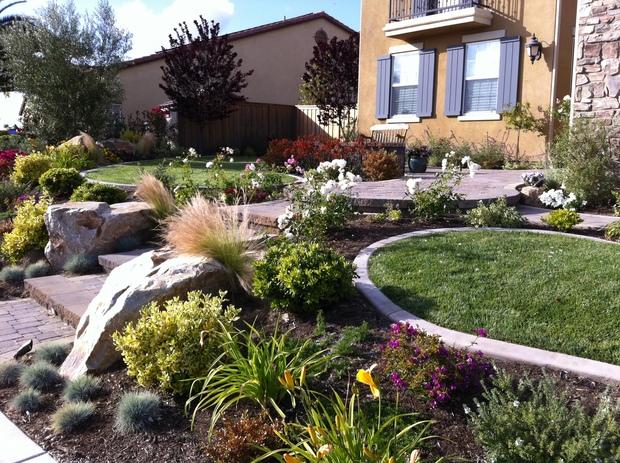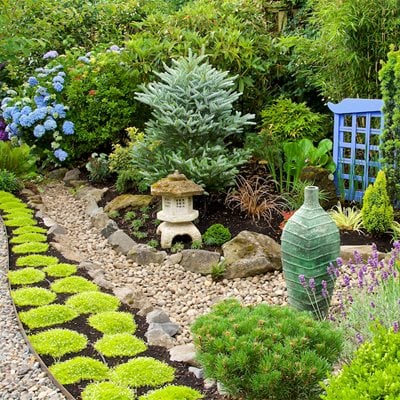Landscapers - Truths
Landscapers - Truths
Blog Article
Our Landscapers PDFs
Table of Contents3 Simple Techniques For LandscapersThe Ultimate Guide To LandscapersThe Definitive Guide for Landscapers5 Simple Techniques For LandscapersFascination About LandscapersThe 15-Second Trick For Landscapers
- A garden feature where water is stood for by an aggregate stone item, typically a crushed rock or granite.- A stone or natural flagstone patio area, path, or walkway constructed without a concrete base.- A stone retaining or complimentary standing wall developed without the use of mortar. - A below ground structure that collect water and permits it to slow down percolate right into the soil around it.
Landscape style that is suitable with a websites' setting in both look and sustainability without adverse impacts to the atmosphere. Edging in the landscape is a line of demarcation that creates visual passion in the yard by separating one section from an additional section.
Areas can also have a feeling of "enclosure" offered by trees, other plantings, fences, or screens. The landscape near the entrance to a building.
Examine This Report on Landscapers

The element in a landscape layout or area in a landscape that is meant to be most noticeable. The centerpiece can be a plant, rock, statuary, collecting area, or other landscape function. A style of yards or yard aspects that stress straight lines, ideal angles and circles. Bushes or bushes located in beds near the structure of a home or other framework.

Landscapers for Dummies
Rock product, either rounded or fractured, that is reasonably tiny- normally 1" or less. Low plants that are enabled or motivated to spread over an area. Can refer to any "hard" garden elements including statuary or boulders yet many frequently is made use of to refer to paths, patio areas, and walls.: Elevation distinction in between the degree of water in a fish pond (or the degree of the pump if it sits outside the pond) and the upper outlet of water which impacts efficiency of the water pump in gph (gallons per hour). Thick bushes or trees that develop a fence, display, or limit.
A chemical used to regulate weeds. Fence boards that run flat, often utilized in modern or Japanese-inspired landscape layouts. Lines that define spaces within a landscape principle. These frequently expand from corners or vital attributes of an existing structure. Correct use of imaginary lines can assist the landscape feel attached to the home and various other components.
An even more unwinded garden dominated by curved as opposed to straight bed lines and a much less inflexible structure. Standard PNW landscapes are informal. A plant that spreads greater than wanted, or right into environments where it does damage. Portland has a checklist of intrusive plants that ought to not be set up in landscapes because they can spread to woodlands or rivers and be difficult to manage.
The Ultimate Guide To Landscapers
Can include head positionings and protection, pipe sizing, GPM specs, and products needed to install this system. Accredited specialist who designs landscapes, educated in design and style as well as in cultivation.
The specialist who plans and creates landscape jobs, usually at a residential or tiny industrial level with the significant design motivation on growings. Landscape designers usually have less education than Landscape Architects and are not licensed. A finished landscape style, detailing all aspects for the new landscape. This generally takes the type of an More about the author illustration theoretically.
Calcium product used to increase the pH in dirt, which will make it less welcoming to moss (Landscapers). A water limited HDPE material utilized below ponds, streams and waterfalls in water functions. Making use of many plantings of the exact same selection to fill out an area in the landscape. This can reduce upkeep and water use in the garden.
A mix of concrete, sand, and water that is used in stone masonry for setting stones and joints. A layer of compost or bark dirt used at the base of a plant. A mass growing of moss. A plant that was existing in a geographical location before people started altering the landscape.
An Unbiased View of Landscapers
Exactly how the yard or a garden element is arranged in relationship to an existing or brand-new function or to a direction. Maintaining a lawn without making use of chemical herbicides, chemicals, or plant foods. Turfs that are not cut but grown in landscapes as perennials. This is a partly open sided leisure or recreation location that adjoins a dwelling, made use of for enjoyable, outside dining and merely enjoying the exterior atmosphere.

Little round crushed rock. Plants that provide seasonal rate of interest and afterwards die back in the wintertime. Annuals do not return the following season, however perennials do. Cold period grass that is the most usual lawn grass in Portland, OR et cetera of the PNW.An open roofed framework over a patio or other landscape function.
The most typical landscape crushed rock in the PNW. Area of the landscape view designed to handle rain water till it can soak right into the ground.
Producing a yard feature more info here consisting primarily of rocks with growings that match and can thrive in the rough atmosphere. Sprinkler head design that turns a stream of water across a location.
The Only Guide to Landscapers

Report this page